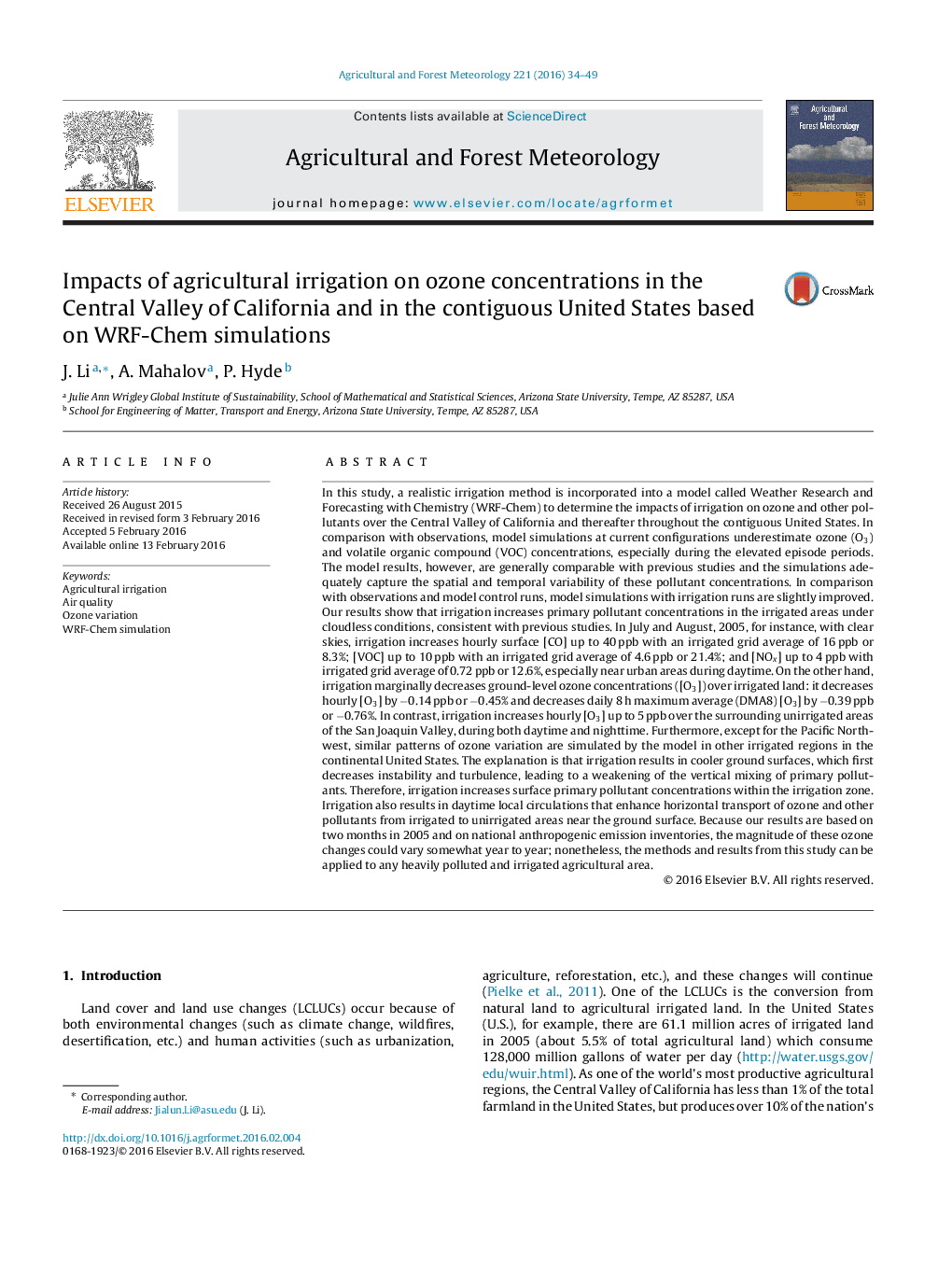| کد مقاله | کد نشریه | سال انتشار | مقاله انگلیسی | نسخه تمام متن |
|---|---|---|---|---|
| 81361 | 158312 | 2016 | 16 صفحه PDF | دانلود رایگان |

• Irrigation reduces the air mixing layer and weakens vertical mixing of air masses.
• Surface concentrations of primary pollutants increase within the irrigated areas.
• Surface O3 decreases within irrigated areas, except in the northwestern U.S.
• O3 increases in the Central Valley's unirrigated areas and along the east coast.
• The model underestimates [O3] and [VOCs] at some sites, compared with observations.
In this study, a realistic irrigation method is incorporated into a model called Weather Research and Forecasting with Chemistry (WRF-Chem) to determine the impacts of irrigation on ozone and other pollutants over the Central Valley of California and thereafter throughout the contiguous United States. In comparison with observations, model simulations at current configurations underestimate ozone (O3) and volatile organic compound (VOC) concentrations, especially during the elevated episode periods. The model results, however, are generally comparable with previous studies and the simulations adequately capture the spatial and temporal variability of these pollutant concentrations. In comparison with observations and model control runs, model simulations with irrigation runs are slightly improved. Our results show that irrigation increases primary pollutant concentrations in the irrigated areas under cloudless conditions, consistent with previous studies. In July and August, 2005, for instance, with clear skies, irrigation increases hourly surface [CO] up to 40 ppb with an irrigated grid average of 16 ppb or 8.3%; [VOC] up to 10 ppb with an irrigated grid average of 4.6 ppb or 21.4%; and [NOx] up to 4 ppb with irrigated grid average of 0.72 ppb or 12.6%, especially near urban areas during daytime. On the other hand, irrigation marginally decreases ground-level ozone concentrations ([O3]) over irrigated land: it decreases hourly [O3] by −0.14 ppb or −0.45% and decreases daily 8 h maximum average (DMA8) [O3] by −0.39 ppb or −0.76%. In contrast, irrigation increases hourly [O3] up to 5 ppb over the surrounding unirrigated areas of the San Joaquin Valley, during both daytime and nighttime. Furthermore, except for the Pacific Northwest, similar patterns of ozone variation are simulated by the model in other irrigated regions in the continental United States. The explanation is that irrigation results in cooler ground surfaces, which first decreases instability and turbulence, leading to a weakening of the vertical mixing of primary pollutants. Therefore, irrigation increases surface primary pollutant concentrations within the irrigation zone. Irrigation also results in daytime local circulations that enhance horizontal transport of ozone and other pollutants from irrigated to unirrigated areas near the ground surface. Because our results are based on two months in 2005 and on national anthropogenic emission inventories, the magnitude of these ozone changes could vary somewhat year to year; nonetheless, the methods and results from this study can be applied to any heavily polluted and irrigated agricultural area.
Journal: Agricultural and Forest Meteorology - Volume 221, 1 May 2016, Pages 34–49